Animals use all sorts of optical trickery to make themselves invisible to predators. Hayley Birch finds out how the natural world can help develop new camouflage materials
Animals use all sorts of optical trickery to make themselves invisible to predators. Hayley Birch finds out how the natural world can help develop new camouflage materials
Wrap yourself in aluminium foil, take yourself off to the woods and you’ll all but disappear, laughs camouflage expert Adam Shohet. But he’s only half joking. Although it might only take one rustle of your shiny cloak to rumble you, there’s nothing ridiculous about the idea of using reflective materials as camouflage. It’s a strategy animals have been using for millions of years, and one that organisations like UK-based QinetiQ - where Shohet works - would like to be able to copy.
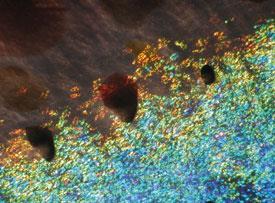
Unsurprisingly, however, those involved in this intriguing area of research are almost as difficult to pin down as their study subjects. Cephalopods, including squid, are masters of disguise in the marine environment, and attracting interest from the sort of funders that prefer to keep their findings under wraps - most obviously, the military. From an outsider’s perspective, it’s only a matter of time before one of these undercover research teams works out how to disappear completely.
Even QinetiQ, as consultants to the defence industry, can offer only the briefest of glimpses at the work they do and the materials they are developing. More than once, Shohet, research and innovation manager for the company’s Farnborough-based stealth materials group, has to apologise for his generalisations when pressed for details. Still, what scraps do exist in the public domain make for absorbing conversation.
Tricks of the light
For a start, camouflage isn’t all about green and brown paint. As Shohet explains, it’s fairly easy to spot someone trying to hide themselves with chemical pigments or paints. ’In most cases, colour can only be seen at quite close range,’ he says. ’So you might get away with not matching colour particularly well.’ Cuttlefish, the camouflage kings, are colour blind, yet they match colour very effectively. According to Shohet, the fact that they don’t need to be able to see their background to blend into it hints that it’s not all about colour matching.

A better strategy, and one that the cephalopods employ successfully, is to try to become completely reflective. So like the foil cloak in the woods, the skin of a squid is mirrored to reflect back as much of its surrounding environment as possible. And in the featureless environment of the ocean, those mirrors become almost invisible. But what is it that enables the squid to do this? Its secret lies in soft optical materials and, more specifically, in the layer of cells called iridophores that lurk below the coloured pigment sacs in the squid’s skin. These contain proteins with a very particular structure responsible for producing an iridescent sheen much like the structures in some birds’ feathers and butterfly wings.
Similar principles are employed in thin-film optics to make photonic crystals and anti-reflective coatings for glasses, often by physical or chemical vapour deposition. These rely on creating periodically repeating structures or layers in the range of the wavelength of visible light; the reflective properties arise from interference with the incoming light waves. In the natural world, peacock feathers are examples of complex photonic crystal structures, ones that scientists have recently used as templates to make novel, tunable photonic materials - light emitting nanoparticles are embedded into the regular structure of the feather, which serves to control the light.1
One of the best known examples of ’structural colour’ in the animal kingdom is the Blue Morpho butterfly, according to Mohan Srinivasarao, a physical chemist at Georgia Tech in Atlanta, US. Although it’s true that the Blue Morpho’s wings look more blue because they contain blue pigments, this is not the main reason we see blue. A close look at the wing scales under an electron microscope reveals a regularly spaced array of biopolymer.2 ’The blue is because of the structure not because of the pigments that are there,’ says Srinivasarao.
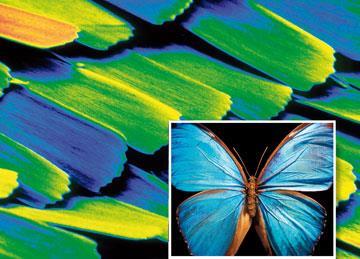
Although he’s no squid expert, Srinivasarao does believe that inspiration for manmade materials can come from the natural world. One of the routes researchers at Georgia Tech are currently pursuing, he says, is trying to mimic the structures on butterfly wings. In work presented at an American Physical Society meeting in March this year,3 the team succeeded in replicating the green on the wings of the Emerald Swallowtail - formed from multiple layers of the polymer chitin and air - using self-assembly and deposition of titanium dioxide and aluminium oxide in very thin layers.
Squid switch
So does structural colour or iridescence work for camouflage as it does for the brightly coloured displays of butterflies? S?nke Johnsen, a biologist at Duke University, Durham, US, who last year received a US navy grant of $7.5 million (?5 million) to study cephalopod camouflage, explains what’s special about the squid - they can do it dynamically; they realign the protein structures responsible for their iridescence in order to match their surroundings. In the rapidly fluctuating light fields near the sea surface, this can mean constant readjustment. ’They can change it on a dime,’ says Johnsen. ’They switch from one optical characteristic to another, so they could be reflecting blue light and then they can tell their cells to change and all of a sudden they’re reflecting green light.’ This ability to adapt instantaneously to environmental changes requires softer, more flexible materials than the hard chitin found in butterfly scales and is clearly one that would be of interest to military funders. But Johnsen says his team work purely on the basic science level - his funders ask him not to think too deeply about possible military applications as all of their results are published in public journals.
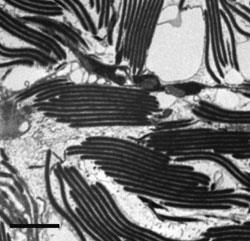
Last year, one of Johnsen’s collaborators, Alison Sweeney, currently at the University of California at Santa Barbara, US, published a paper that reveals more details of the reflective structures in a cephalopod commonly fished around the Californian coast - the longfin inshore squid (see Chemistry World , November 2009, p28). ’There are iridescent cells and then darkly pigmented cells on top of those, and the two of those working in concert are responsible for these dynamic camouflage changes,’ explains Sweeney. In the skin of the squid, she explains, the arrangement of the proteins in the iridescent cells is completely disordered. (This is fairly unusual since cell proteins tend to have definite architectures such as helices or sheets). But chemical stimulation by a neurotransmitter causes the polymers, which are otherwise repelled from each other by their positive charge, to gain negative phosphates that allow them to agglomerate. In more neutral conditions, aromatic interactions begin to dominate and the proteins organise themselves into stacked, plate-like structures - essentially, they ’switch on’ iridescence.
More recently, Sweeney and co-workers proved that varying the thickness of the platelets could produce colour shifts right across the visible spectrum.4 They also went on to suggest that soft protein materials such as these could have biomedical applications, for instance in smart artificial lenses with self-correcting focal lengths. But this is not the first time the potential of so-called ’reflectin’ proteins has been recognised. In a 2007 Nature paper, scientists at the Air Force Research Laboratory in Dayton, US, cast reflectin proteins - engineered to be manufactured in bacteria - in films of varying thickness, resulting in a range of different structural colours.5 They also showed it was possible to induce dynamic iridescence by exposing reflectins to water vapour, which makes them swell and changes their reflectance - shifting from one wavelength to another.
Colour or structure?
Back at QinetiQ in the UK, Shohet is cagey on the subject of controlling dynamic iridescence, but recognises ’it would be a problem for a manmade material’. Certainly, translating the way the squid do it into something workable in a synthetic material seems complex. But Shohet says there are already some materials that mimic, broadly speaking, the layers in a squid’s skin. In the squid, the pigment - acting like a filter - resides in a layer of cells overlying the reflective plates in the iridophores. Similarly, says Shohet, displays currently being marketed by electronic giants like Sony and Sharp use liquid crystals to create a multilayered effect, except underneath is an absorption layer rather than a reflective layer. These kinds of low power displays are ’bi-stable’, meaning they only require power if the image needs to be switched - an advantage that could be equally valuable in a military situation.
Alternatively, mimicking the pigment layer rather than the reflective layer, one might imagine a microfluidic system that could control the movement of tiny volumes of coloured chemicals to and from the surface of a material, enabling a colour change.6 Or even coloured electroactive polymers - polymers that change their shape when a current is applied - that would act like the muscles surrounding the pigment sacs, which stretch open when the squid wants to make larger dots of colour. ’Electroactive polymers are essentially very small scale actuators,’ says Shohet. ’So this is an area that is quite interesting to look at because it is a way of making a sort of very small muscle.’
It’s still the idea of completely reflective materials, though - the foil in the woods idea - that Shohet thinks is most promising. ’There’s a very big difference between using pigments for camouflage and using reflective structures,’ he says. ’One of the reasons we’re particularly interested in using structural colours is because if you take a chemical pigment, there’s a limit on how much light you can actually reflect, which is why the cuttlefish, octopus and squid use reflective elements underneath their absorption layer so that they can actually reflect more light back.’ So no matter how good the colour match, he says, someone sitting in bright sunlight and only reflecting 50 per cent of the light that hits them is always going to be too dark.
Adaptive camouflage also relies on making a useful assessment of your environment and this is one important aspect of cephalopod camouflage that materials scientists must rely on behavioural biologists to unpick. Fortunately, Johnsen, in collaboration with Sweeney, is preparing to build a Star Trek-style holodeck where they will observe the squid’s responses to virtual surroundings captured by virtue of a six-headed camera. Johnsen is hopeful this will eventually lead to materials applications. ’It’s tricky because animals have one big advantage in that they’re alive and their cells are capable of changing things at tiny size scales that are still pretty challenging for the average engineer,’ he says. ’We’re hoping to find things that could then be converted over to human technology, but it’s always a challenge.’
Srinivasarao, on the other hand, suggests the feat of dynamic iridescence may already have been achieved. ’For camouflage, there are people doing this, but they are all funded by the government and so if they can do it very well, they are not going to tell you,’ he says. ’My guess is that some of the guys actually know how to do it.’ And that, says Shohet, is a fair comment.
Hayley Birch is a freelance science writer and editor based in Bristol, UK
Anti-reflection
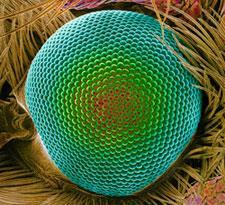
References
1 J Han et al, Nanotechnology, 2008, 19, 365602
2 M Srinivasarao, Chem. Rev., 1999, 99, 1935
3 C J Summers, American Physical Society meeting, March 2010,
4 A R Tao et al, Biomaterials, 2010, 31, 793
5 R M Kramer et al, Nature Mater., 2007, 6, 533
6 A Shohet and C Lawrence, J. Defence Sci., 2006, 10, 252
7 Y-F Huang et al, Nature Nanotech., 2007, 2, 770
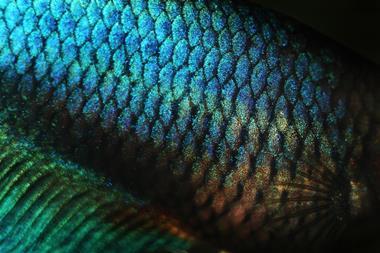






No comments yet